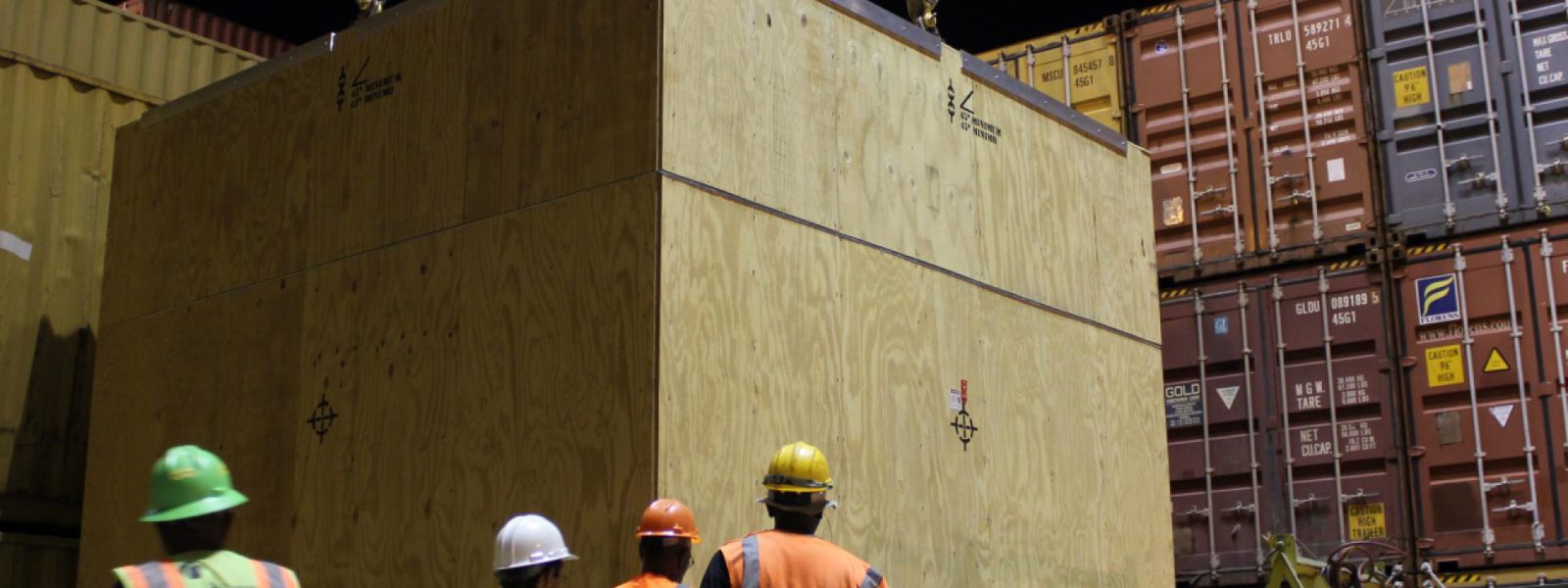An 800-meter length of sample toroidal field conductor is en route to La Spezia, Italy
―Lynne Degitz
ITER is a unique international scientific partnership that aims to demonstrate industrial-scale fusion power in the world’s largest experimental tokamak. An unusual aspect of the project is the often long and intricate journey some hardware components take from manufacturing, through testing and ultimately to St.-Paul-lez-Durance, France, where ITER is now under construction. The logistics and coordination are daunting, but ITER Members, including US ITER, are well prepared to face the challenge. US ITER, managed by Oak Ridge National Laboratory, worked closely with vendor High Performance Magnetics in Tallahassee, Fla., to complete fabrication and ship 800 meters (approximately a half mile) of sample toroidal field magnet conductor to the port of Charleston, S.C. and then on to La Spezia, Italy, where the European conductor winding facility is located. Delivery is expected to occur in late June.
The shipping procedures are exacting to ensure safe delivery of the sample conductor, which weighs in at about 30,000 pounds, including its shipping crate.
“The coil of sample conductor is about 4 meters in diameter. It is stacked up like a Slinky and can actually move like a Slinky if we don’t secure it,” said Kevin Chan, a project engineer for the US ITER magnet systems.
The sample conductor, composed of copper strands which are not superconducting, was produced in order to qualify the conductor fabrication processes; the production conductor installed in the ITER tokamak will be composed of a mixture of copper and niobium-tin superconducting strands.
The lift fixture, which is integral to the crate around the conductor, helps the conductor maintain its shape within the ITER requirement of +/-6 millimeters. The US ITER team actually achieved an even tighter tolerance of +/-1.5 millimeters with the fixture design. The fixture also had to meet European standards for rigging and is CE, or Conformité Européenne, marked to indicate that requirements were met.

“Securing the conductor with the fixture is necessary for safety—of the conductor and of people handling it, plus for stability and integrity of the conductor,” Chan said.
The shipping crate is about the size of a 15-foot cube and can be delivered by container ship; however, securing the cube to the vessel required some additional attention to address specific design features of the crate. Some ports only receive container ships, while others have the specialized equipment and rigging needed to handle oversized cargo.
“There are a lot of unique aspects to ITER shipments, including international collaboration, dealing with a variety of shipping origins and destinations, different vessel types and selecting the best method for transportation with attention to costs, timing and risk,” said Jeff Parrott, logistics and transportation coordinator at US ITER. US ITER is using the US-based vendor TransProject, LLC, to handle shipping, as part of a project-wide logistics services agreement.
Eighteen toroidal field coil magnets will be installed in the ITER tokamak, providing magnetic fields to confine 100-million-degree plasma inside the ITER vacuum vessel. Before the final production conductor—which is superconducting—is fabricated, ITER partners contributing conductor must send a large non-superconducting sample to the conductor winding facility for winding trials and for calibration of the winding machines. The toroidal field winding facility in La Spezia is located on the premises of ASG, a supplier to the European Domestic Agency for ITER.
Europe is responsible for winding the final production conductor that will be installed in the ITER tokamak. The US ultimately will contribute more than 4 miles of toroidal field conductor, which is enough to wind a little more than one coil. China, the European Union, Japan, Korea and the Russian Federation also are supplying conductor. The first US deliveries of production conductor will begin later this year.
US participation in ITER is sponsored by the Department of Energy Office of Science and managed by Oak Ridge National Laboratory in Tennessee, with contributions by partner labs Princeton Plasma Physics Laboratory and Savannah River National Laboratory.
Media Contact: Lynne Degitz
